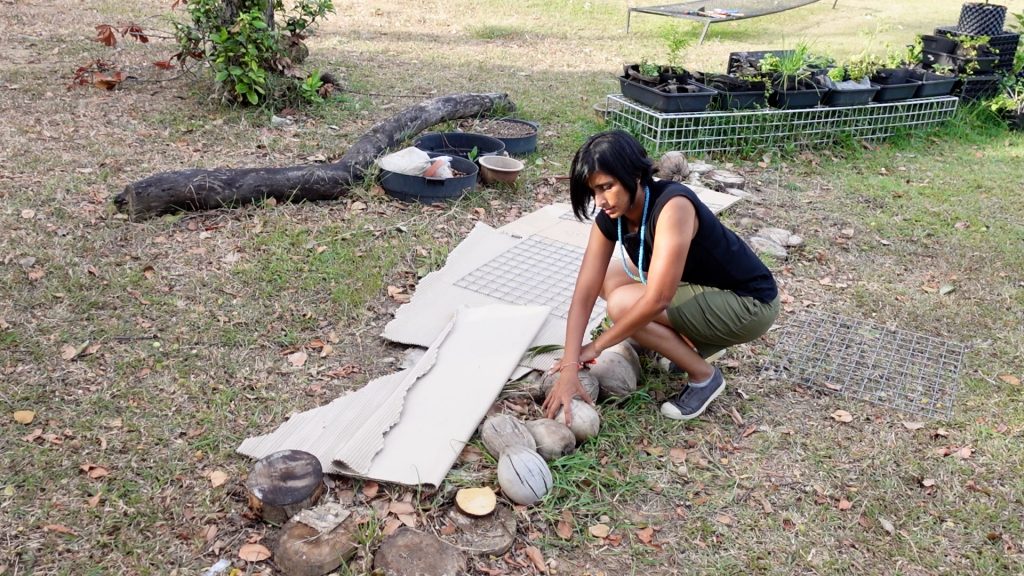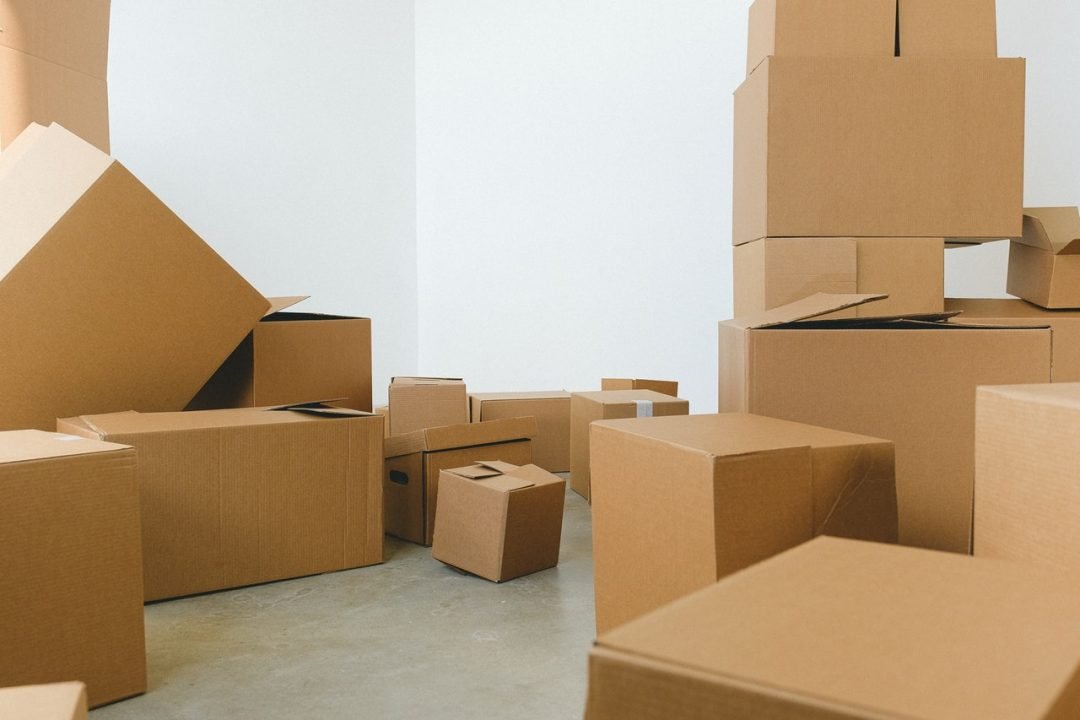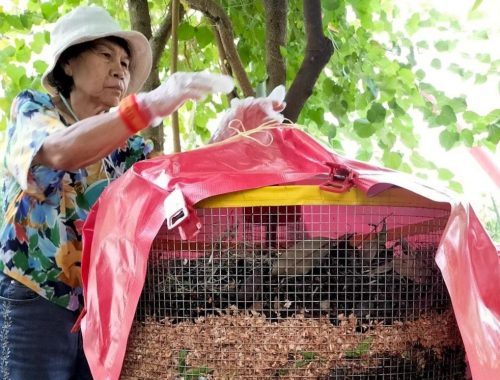Cardboard boxes are one of the most common packaging materials we receive with our online purchases. The good news is that we can easily recycle and reuse these cardboard boxes.
Cardboard is a paper-based material made from wood pulp and other plant fibres, making it recyclable. However it is more eco-friendly to reuse or repurpose it if possible.
They can be used for a variety of purposes, both inside and outside the home. In this blog post, I will discuss how to recycle as well as reuse cardboard boxes to put them to good use! From DIY projects like making kids toys and growing oyster mushrooms to creating a no-dig garden, there are many ways to reuse cardboard.
The two types of cardboard that we commonly have at home are corrugated cardboard and paperboard. Corrugated cardboard is the type with fluted paper in between two layers of linerboard. It is used for shipping boxes and packaging. Paperboard is thinner and used for cereal boxes, shoe boxes, and tissue boxes. In this blog post I will focus on corrugated cardboard.
How to Recycle Cardboard Boxes

Almost all cardboard can be recycled, however think twice about recycling heavily stained cardboard. If your cardboard is heavily food-stained, it may be better to compost it or use it to create a no dig garden instead.
Take for example, the humble pizza box. Depending on where in the world you live, oil stained pizza boxes may be rejected from recycling facilities. In Singapore, residents are advised against recycling food stained pizza boxes, while in Australia and the US, it depends on the city council one lives in. Therefore it is best to check with your local council. Some city councils accept greasy pizza boxes as long as the cheese is removed from the box. Often times, the pizza box cover arrives without stains and can be torn off and recycled.
To recycle cardboard packing boxes, start by removing the airway bill, plastic handles, packing tape or stickers that arrived with your box. Next, fold and flatten it and you can either recycle it in the recycling bin in your apartment block or on your property, at a local recycling centre or contact your local town council or waste management company to see if they offer pickup for cardboard recycling.
Donating Cardboard Boxes
You can recirculate your cardboard boxes by donating them to organisations or small businesses which require packaging material. Alternatively you can consider offering it for free on Craigslist or other websites that host classified advertisements as packing boxes for those moving houses.
When approaching businesses, it is worth contacting eco-minded stores as they are more receptive to reusing cardboard boxes. Some may prefer small instead of large boxes so it is a good idea to specify what sized boxes you have when getting in touch.
In Singapore, packaging businesses like Jaguar 3R Ventures welcome cardboard boxes in good condition and resell them, and registered charity Tzu Chi Singapore accepts recyclables including cardboard every third Sunday of the month at these designated collection points.
A green business like Bamboo Straw Girl is open to reusing packaging materials and prefers small cardboard boxes over large ones. Do message her via her Instagram account to find out how to drop off any packaging materials to her.
How to Reuse Cardboard Boxes
Alternatively, how you can reuse your cardboard boxes is by repurposing them for use around your home.

1. DIY Children’s Toys
One way to reuse cardboard boxes is by turning them into a DIY project. There are a variety of different projects that you can embark on with cardboard boxes.
Reduce screen time and spend quality time with your children while encouraging their creativity by making cardboard toys from scratch.There are many DIY cardboard craft ideas for children’s toys available on Pinterest, here are my picks for fun children’s craft ideas, with links to easy-to-follow plans. Or check out YouTube as a resource for great step by step video tutorials!
2. Grow Oyster Mushrooms

Did you know that you can grow oyster mushrooms on cardboard? Oyster mushrooms have a mild flavour and a firm texture, making them versatile enough to be used in a variety of dishes. They are not only the fastest growing mushroom, they are also very easy to grow!
For a step-by-step guide, read this blogpost by GroCycle. Here you will learn how to sterilise your cardboard, get oyster mushroom mycelium from store bought oyster mushrooms, and inoculate cardboard with mycelium. This is great for beginners to learn the basics of mushroom growing.
3. Reorganising the Home

If you are planning on decluttering your home, cardboard boxes make for great storage containers. They are useful for segregating the items you wish to keep, donate or throw away. Furthermore, small boxes can be used to organise small items like socks, stationary and knick knacks.
4. Build a Cat House

Cat houses can cost a pretty penny, why not make your cat/s one instead? Here are some Pinterest ideas for your inspiration. Should you prefer smaller projects, you can consider making cardboard cat toys instead.
5. Create a No-Dig Garden

Tilling destroys soil structure over time, this is why no-dig gardens are growing in popularity. One method to start a no-dig garden is by sheet mulching. It begins with layering cardboard on top of the ground to suppress the growth of weeds. On top of it, add approximately one foot of organic mulch.
Mulch is material placed on top of soil to suppress weeds, conserve soil moisture, regulate soil temperature and can help improve the appearance of the landscape. Mulch comes in many forms, organic (meaning it comes from plants or animals), gravel, plastic, carpets, and it can also be alive, like ground cover crops.
As you layer the organic mulch, just make sure you balance the carbon and nitrogen sources. Nitrogen materials include greens like lawn clippings, vegetable trimmings, while carbon materials refer to brown and dry ingredients like leaves and branches. It is very much like building a lasagne, this is why it is also known as a lasagne garden bed.
Many people like to add leaves, wood chips, compost, food waste, coffee grounds, manure, hay or straw, twigs or branches. It is a good idea to water along the way as you build the layers. To finish off your no-dig garden, top it off with compost, add mulch and it is finished. Let it sit for a few weeks at least as you will need to wait for the heat from the pile to disperse. If you can’t wait, you can try planting green leafy vegetables first. Over time, you can expect the pile to sink as the materials break down.
To see a no-dig garden in action, check out this blogpost about the good work Nova Ceceliana Nelson has done at the Goodman Community Farm. Here, she has built several raised bed gardens using the no-dig method because the soil on the premises is sandy and too difficult to dig.
If you have cardboard boxes that are too damaged to recycle or reuse, you can always use them for this purpose or you can always put them in your compost as a source of carbon.
I hope this blog post has given you some ideas on how to recycle and reuse cardboard boxes. The next time you receive a package in the mail, think about how you can put that cardboard box to good use! If you have any other ideas, please share them with us in the comments section below!
For more gardening updates, follow my Facebook Page – The Tender Gardener, Instagram page @tendergardener and subscribe to my YouTube channel! See you there!
Main photo by SHVETS production. All images are mine unless otherwise indicated.





No Comments